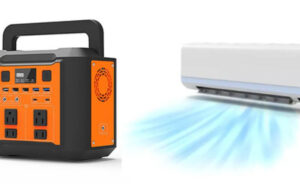Wall and baseboard heaters are effective heating options for small spaces with little energy. Check baseboard heater vs. wall heater to find which option best meets the needs of your home.
Wall heating is the best option if you have limited space and want a heating solution that produces heat rapidly and is as little as possible. A baseboard heater typically makes the most sense if you need to heat a large space with plenty of walls or floor space. Learn how wall heaters and baseboard heaters operate in this article. Additionally, you’ll learn about the advantages that set each of these devices apart.
Table of Contents
ToggleAlso check: Why Does My Space Heater Keeps Shutting Off?
How do Baseboard Heaters And Wall Heaters Differ?
Electricity and convection are used by baseboard and Wall Heaters to produce heat. Energy is transferred from one point to another during convection. The actual physical units, however, differ significantly. The differences between these two heating options are detailed below.
Baseboard Heaters:
Older condominiums and traditional homes frequently have baseboard heaters since they are simple to install. Even though it is not commonly used today, it offers several benefits and is perfect for heating tiny spaces or adding to existing heating.
The metal baseboard units are less than 12 inches tall and 6 to 8 feet long. Installing it in a well-ventilated area, such as under a window, is compelling. This is because heat is produced when cold air enters the baseboard through the vents. Metal heating elements in the baseboard that are electrically driven warm the air. The device’s heating element produces warm air that rises.
Continuously repeating this process results in convection currents. There are two different types of baseboard heaters, which should note. Electric baseboard heaters are the closest thing to wall heating, but there are also hydronic baseboard heaters that warm rooms with scalding water.
Wall Heaters:
Wall heaters are simple to install and ideal for compact rooms, just like baseboard heaters. Air flows across the space and enters the wall heating system, which operates akin to baseboard heating. A metal heating element is located inside the wall heater and is powered by the outlet it is plugged into. Warm air is circulated away from the unit by a fan inside.
These fixtures are affixed to the wall directly, as their name implies. The size of the units varies, but the majority are between 12 and 16 inches long and tall. Almost any room can easily accommodate these gadgets’ installation. Baseboard heaters do not have a fan, which is a benefit. Because fans can move air faster and deeper into a room, wall heating eventually provides faster, more effective heating.
Baseboard Vs Wall heater: What’s the difference?
Both choices are fantastic, but keep a few things in mind to get the most out of your heater. We’ll look at how heaters dissipate heat, how noisy they are, how much room they take up, and how long they last in this post.
Efficiency:
Fast-heating rooms are the perfect fit for wall heaters. Baseboards rely on natural convection, while fans assist air circulation throughout the space. Although wall heaters consume less energy overall than electric heaters due to their quicker heating times, electric heaters are 100% efficient.
Degree of Noise:
Our baseboard heaters are almost silent because they don’t have any moving parts, but all of our heaters are quiet. When the fan is running, the wall heater is noisy but quieter than the typical refrigerator. A wall heater, for instance, has a noise level of about 50 decibels at a distance of 1 meter from the heater, while typical household noise is typically around 40 dB.
Saves Space:
Because wall heaters are more portable and use less wall space, you have more flexibility in arranging your furniture.
Durability:
In general, wall heaters endure 8 to 12 years. Usually, baseboards last for more than 20 years. Convection heating is used in baseboard heaters instead of the fast spinning or moving elements in wall heaters. This prolongs the life of the baseboard heater and lessens wear on it.
Also check: How To Get Rid of Baseboard Heaters? 6 Easy Steps
Conclusion:
Wall heaters and baseboard heaters are excellent choices for many reasons, and electric heating has several benefits. It all comes down to personal preference when picking the ideal solution for your space. However, the dimensions and characteristics of your specific room will influence your choice.
It is determined by elements including wall and floor area, heating effectiveness, and amount of heating solutions. It’s crucial to comprehend how it operates like any other appliance in your house. Fortunately, wall and baseboard heaters have certain indisputable benefits, making them excellent choices for heating small spaces and homes.
FAQs
Is it possible to place a sofa in front of a baseboard heater?
Front Vacant Space of Baseboard Heaters a couch or chair can be placed close to a heater but must be at least one foot away. Furniture placement that is too close can provide a fire risk and significantly reduce the heater’s efficiency by obstructing airflow to and from it.
What are Electric baseboard heating’s drawbacks?
The major drawbacks of electrical baseboard heating are their high annual heating expenses, making them best suited for additional heating requirements. Natural gas is virtually always a less expensive heating option across the US.
Do baseboard heaters still work today?
Is it time to replace your home’s baseboard heaters? Although this heating option used to be the norm, it is now outdated and cannot deliver the contemporary comforts or efficiency that an HVAC system can. In all honesty, baseboard heating does have certain benefits.
Can a wall heater take the place of a baseboard heater?
Most tool-savvy handy people can complete the project of replacing electric baseboard heaters with wall heaters without any issues. Read the installation handbook that came with your heater before starting the installation because every brand and model is a little different.
Is the efficiency of baseboard heaters improving?
Buying a modern baseboard heater won’t make it more efficient than an older one because all-electric baseboard heaters turn 100% of their electricity into heat.
Should you switch from a baseboard heater to a wall heater?
Baseboard heaters are an excellent, affordable way to decrease the temperature in a room in your house. Wall heaters have a little higher initial cost. You do, however, benefit from faster, more effective heating as well as more furniture placement possibilities.





















